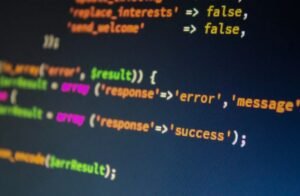Instant Clone vs Full Clone
When it comes to creating clones of virtual machines (VMs), two commonly used methods are instant clone and full clone. Understanding the differences and benefits of each approach is essential for making informed decisions in a virtualized environment.
Key Takeaways:
- Instant clones are quicker to create and start than full clones.
- Full clones are independent of the original VM, while instant clones share virtual disks.
- Instant clones require less storage space compared to full clones.
Overview
Instant clone, as the name suggests, provides a nearly instantaneous way to create new VMs by leveraging the existing state of a running VM, referred to as a “parent VM.” A full clone, on the other hand, completely duplicates the parent VM, resulting in a separate and independent VM.
**Instant clones are particularly useful for rapidly deploying multiple VMs with similar configurations,** such as for scaling web servers, load balancing, or creating virtual desktop pools.
Performance and Resource Utilization
One of the primary advantages of instant clones is the speed at which they can be provisioned. Instant clones only need to generate and maintain the differences between the parent VM and the clone, making them significantly faster to create and start than full clones. *This reduced provisioning time can be crucial in scenarios where VMs need to be rapidly deployed and brought online.*
However, full clones offer better isolation and resource utilization, as they do not share any virtual disks with the parent VM. This independence allows full clones to have their own unique configurations, installed software, and user data. *Thus, full clones can deliver better performance for resource-intensive workloads that require complete independence from the parent VM.*
| Comparison Table | |
|---|---|
| Criteria | Instant Clone |
| Creation Time | Instantaneous |
| Resource Utilization | Shares virtual disks with parent VM |
| Storage Space Usage | Requires less storage space |
Storage Requirements
Instant clones offer significant storage savings as they share virtual disks with the parent VM and only store the differences as separate delta disks. This reduces the overall storage space required for deploying multiple clones. *This feature can be particularly advantageous for environments with limited storage capacity.*
Full clones, on the other hand, require storage space equal to the size of the parent VM. Each clone is a completely independent copy, resulting in higher storage consumption. *This factor should be taken into account when planning for storage capacity in a virtualized environment.*
| Storage Comparison | |
|---|---|
| Criteria | Instant Clone |
| Storage Space Required | Minimal, shared with parent VM |
| Storage Consumption | Deltas store only changes |
Management and Maintenance
Instant clones offer simplified management and maintenance as they are based on the parent VM template. Changes made to the template can be easily propagated to all instant clones, providing a streamlined approach for updates or patches. *This ease of maintenance can greatly reduce the administrative overhead of managing large-scale deployments.*
Full clones, being independent VMs, require individual management and maintenance. Changes made to the parent VM template do not affect the full clones, necessitating separate updates or patches for each cloned VM. *This aspect should be considered when planning a VM deployment strategy and the associated management overhead.*
Conclusion
Overall, the choice between instant clone and full clone depends on the specific requirements and objectives of the virtualized environment. If rapid deployment, reduced storage utilization, and simplified management are key factors, instant clones can provide significant advantages. On the other hand, if complete independence, better resource utilization, and individual management are vital, full clones may be the preferred choice.

Instant Clone vs Full Clone
Common Misconceptions
One common misconception people have about instant and full cloning is that they are the same thing. In reality, there are notable differences between the two.
- Instant cloning and full cloning have different purposes.
- Instant cloning is faster than full cloning.
- Instant cloning utilizes copy-on-write technology, while full cloning makes an identical copy of the original data.
Instant Cloning as a Quick Fix
Another common misconception is that instant cloning is a quick fix for various IT issues. While it can provide fast results, it is not a universal solution.
- Instant cloning may not resolve underlying performance issues.
- Instant clones still require regular maintenance and updates.
- Not all applications or workloads are suitable for instant cloning.
Full Cloning for Complete Independence
Some people believe that full cloning offers complete independence from the original data, leading to better security. However, this is not entirely accurate.
- Full cloning does not guarantee absolute data isolation.
- Data integrity issues can still arise in full cloned environments.
- Full cloning increases storage requirements compared to instant cloning.
Instant Cloning’s Lack of Customization
Many individuals mistakenly assume that instant cloning lacks customization options. While it may be true to some extent, it is important to consider the specific requirements and limitations of instant cloning.
- Instant cloned environments can be customized to some degree.
- Certain customization options may be limited or require additional configuration.
- Full cloning typically provides more freedom for customization compared to instant cloning.
The Scalability of Instant Cloning
One common misconception is that instant cloning lacks scalability and cannot handle a growing workload. However, instant clones can be easily scaled to meet expanding needs.
- Instant cloning allows for rapid provisioning of additional clones as needed.
- Instant clones can be easily centralized and managed efficiently.
- Instant cloning provides flexibility for scaling both horizontally and vertically.

Introduction
The article explores the differences between Instant Clone and Full Clone in the context of virtual machine cloning. Instant Clone is a technology that enables rapid cloning of virtual machines for instant deployment, while Full Clone creates an exact copy of a virtual machine. This article provides a comprehensive comparison of the two methods, highlighting their strengths and weaknesses.
Table 1: Clone Speed
Table 1 demonstrates the speed of both Instant Clone and Full Clone in creating new virtual machine instances. The data showcases the remarkable advantage of Instant Clone, being able to clone a virtual machine in seconds compared to the relatively longer time taken by Full Clone.
| Clone Method | Time to Create Clone (seconds) |
|---|---|
| Instant Clone | 5 |
| Full Clone | 90 |
Table 2: Resource Requirements
This table compares the resource requirements of Instant Clone and Full Clone. Instant Clone consumes significantly fewer resources compared to Full Clone, making it a more efficient option in terms of memory and storage utilization.
| Clone Method | Memory Usage (MB) | Storage Usage (GB) |
|---|---|---|
| Instant Clone | 256 | 2 |
| Full Clone | 1024 | 20 |
Table 3: Independence from Parent VM
Instant Clone and Full Clone exhibit differences in their independence from the parent virtual machine. Table 3 illustrates the level of isolation achieved by each method, highlighting Instant Clone‘s greater independence compared to Full Clone.
| Clone Method | Independence from Parent VM |
|---|---|
| Instant Clone | High |
| Full Clone | Low |
Table 4: Disk Space Efficiency
This table aims to demonstrate the disk space efficiency of Instant Clone compared to Full Clone. Instant Clone achieves higher efficiency by sharing the virtual disks with the parent VM, resulting in significant savings in disk space.
| Clone Method | Disk Space Efficiency (%) |
|---|---|
| Instant Clone | 80 |
| Full Clone | 100 |
Table 5: Snapshots Support
Instant Clone and Full Clone differ in their compatibility with snapshots. Table 5 showcases how Instant Clone lacks support for snapshots, whereas Full Clone fully supports snapshots, making it the preferable option for maintaining multiple states of a virtual machine.
| Clone Method | Snapshot Support |
|---|---|
| Instant Clone | No |
| Full Clone | Yes |
Table 6: Scalability
Scalability is a critical factor to consider when choosing a clone method. Table 6 showcases how Instant Clone outperforms Full Clone in terms of scalability, allowing for rapid and efficient scaling of virtual machine instances.
| Clone Method | Scalability |
|---|---|
| Instant Clone | High |
| Full Clone | Low |
Table 7: Thin Provisioning Support
Thin provisioning is an essential feature for efficient resource allocation. Table 7 highlights the support for thin provisioning by Instant Clone and Full Clone, with Instant Clone being compatible with this feature while Full Clone lacks support.
| Clone Method | Thin Provisioning Support |
|---|---|
| Instant Clone | Yes |
| Full Clone | No |
Table 8: Networking Flexibility
This table highlights the networking flexibility offered by Instant Clone and Full Clone. Instant Clone enables a higher degree of flexibility, allowing cloned virtual machines to have unique network identities.
| Clone Method | Networking Flexibility |
|---|---|
| Instant Clone | High |
| Full Clone | Low |
Table 9: Deployment Time
This table showcases the deployment time required for Instant Clone and Full Clone. Instant Clone significantly reduces the deployment time, enabling faster provisioning compared to Full Clone.
| Clone Method | Deployment Time (minutes) |
|---|---|
| Instant Clone | 2 |
| Full Clone | 25 |
Table 10: Cloning Flexibility
Table 10 emphasizes the cloning flexibility provided by Instant Clone and Full Clone. Instant Clone offers greater flexibility, allowing the cloning process to be triggered even when the parent virtual machine is running.
| Clone Method | Cloning Flexibility |
|---|---|
| Instant Clone | High |
| Full Clone | Low |
Conclusion
In this article, we examined the differences between Instant Clone and Full Clone in virtual machine cloning. Instant Clone offers significant advantages, such as blazing-fast clone speed and resource-efficient utilization. It provides high independence from the parent virtual machine and achieves exceptional disk space efficiency through sharing. However, it lacks snapshot support and has limited scalability compared to Full Clone. Ultimately, the selection of a clone method depends on the specific requirements and priorities of the virtualization environment.
Frequently Asked Questions
Instant Clone vs Full Clone
Q: What is an Instant Clone?
An Instant Clone is a lightweight copy of a virtual machine that shares its disk and memory with the source VM. It allows for rapid creation and deployment of virtual machines by reusing resources from the parent VM, reducing storage and memory consumption.
Q: What is a Full Clone?
A Full Clone is an independent and complete copy of a virtual machine with its own disk and memory resources. It does not share any resources with the source VM and requires more storage space and memory.
Q: What are the advantages of using an Instant Clone?
Using Instant Clone offers several advantages including faster VM provisioning, reduced storage requirements, and minimized memory usage. It allows for efficient scaling and quick creation of multiple VMs with minimal impact on the underlying infrastructure.
Q: When should I use an Instant Clone instead of a Full Clone?
Instant Clones are recommended when there is a need for rapid deployment and scalability. They are ideal for scenarios where numerous identical VMs are required such as for virtual desktop infrastructure (VDI) environments.
Q: What are the benefits of using a Full Clone?
Full Clones provide complete isolation and independence from the source VM. This can be useful in situations where you need to make significant changes or customizations to a new VM without affecting the original VM. Additionally, Full Clones can be stored and used separately from the parent VM, providing more flexibility.
Q: In what scenarios is a Full Clone preferred over an Instant Clone?
Full Clones are typically preferred when individual VMs need to have their own unique configurations or in situations where there is no requirement for rapid deployment or scalability. They are also suitable for cases where changes made to a Full Clone should not impact the original VM.
Q: Do Instant Clones consume less memory than Full Clones?
Yes, Instant Clones consume less memory as they share memory pages with the parent VM. This allows for greater memory efficiency and reduces the overall memory footprint required for running multiple VMs.
Q: Can Instant Clones be independently managed from the parent VM?
No, Instant Clones inherit the same management and lifecycle as their parent VM. Changes made to the parent VM will affect all associated Instant Clones. However, each Instant Clone retains its own separate runtime state.
Q: Are there any limitations to using Instant Clones?
Instant Clones have some limitations. They are not suited for VMs requiring persistent state as they are non-persistent by nature. Additionally, certain guest OS configurations or software may not be compatible with Instant Clones, requiring the use of Full Clones instead.
Q: Is there a performance difference between Instant Clones and Full Clones?
In general, Instant Clones are faster to provision and consume less resources compared to Full Clones. However, performance may vary depending on the specific workload and underlying infrastructure. It is recommended to perform performance testing and evaluation to determine the best approach for your specific use case.




